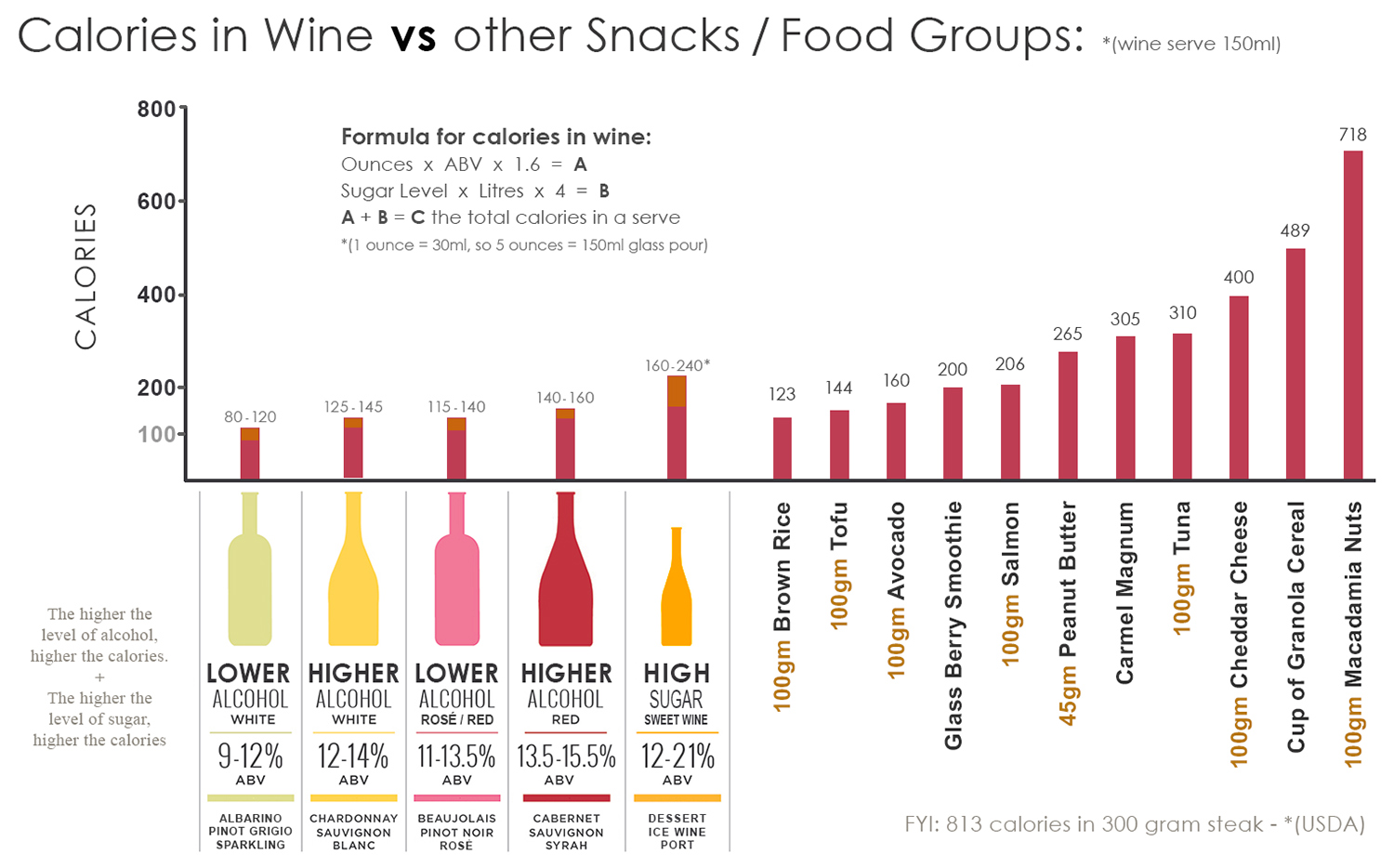The number of Calories in Wine:
More and more people are curious about how many calories they are consuming when it comes to different food groups. Though it is quite common to forget that when drinking wine, we are also consuming calories. So how many calories are in wine?
The answer depends on the wine - though most dry white and red wines come in around the 100-130 calories per 150ml glass.
There are fewer calories in wine than most other alcoholic beverages. A classic dry Pinot Grigio can come in at 80-85 calories per serving. As well as other lower alcohol dry wines like Chablis is at the lower end of the calories, along with a lighter style dry Riesling, Chardonnay and cooler climate Cabernet Sauvignon are around 90-100 calories per glass.
You can add 10-15 additional calories when you enjoy a quality red wine, which can have a higher level of alcohol e.g. a Bordeaux blend, Rhône Valley red, a bold wine from Chile or Argentina or an old bush vine red wine from the Barossa Valley in Australia. Whereas a light, dry style Rosé a and dry Champagne have around 80-100 calories. Other wines weigh in much heavier in the calories - Muscatel and Madeira come in around 160, Tokay dessert wine sneaks up to 165, while some red Port Wines can get up to 185 calories per glass.
While a single glass may only add about 100 calories to an evening, those who drink wine regularly and tend to share between 3 to 5 glasses in an evening. It's not just about the calories in wine when trying to maintain a low-calorie lifestyle and still participate at social events. Some calories are easier to burn while others are easier to store. Wine comes from fruit which is a form of sugar. The sugar in wine, even dry wines, makes calories harder to burn off.
Sugar that comes from fruit is a natural and healthy energy, although once the fruit has been fermented, the sugar content changes and becomes more fructose-like than its original form. The calories in alcohol are metabolised first by the body, ahead of burning fat - which is not desirable if on a balanced diet.
Now, keeping in mind that an average Gin & Tonic *(240ml high ball) is around 200 calories, and that many chilled (pre-mixed) alcoholic drinks can average 300 calories or higher per serve, red or white wine is certainly a low-calorie choice given the options - though always drink in moderation.
According to the USDA - *(United States Department of Agriculture), most table wines contain anywhere from 100 to 130 calories per 150ml serving. That’s about the same number of calories in a 80gm serving of Avocado, a heaped teaspoon *(22gm) of Peanut Butter.
Wine is essentially a blend of water and alcohol that develops through the fermentation a grape sugars, carbohydrates and minerals. Calories in wine come from two of those ingredients: alcohol and carbohydrates (i.e. sugars). Wines with the fewest calories are the ones that have the lowest amounts of both sugar and alcohol.
Finding low-calorie wines isn’t always straightforward. Both factors play a role when it comes to the calorie makeup of a wine. Just because a wine is dry *(less than 2g/L of residual sugar) doesn’t automatically mean it has fewer calories. If that wine is both dry and high in alcohol, it can have more calories than a lightly off-dry wine that has less alcohol . For example, while a Moscato d’Asti has a low alcohol content of 5.5% Alc./vol., it can have more calories than a dry white wine because it has much more sugar at around 90-100g/L.
Higher alcohol content in a glass of wine typically means higher calories. That is because alcohol contains approximately 7 calories per degree. As the alcohol in your wine increases, so does the number of calories. Then depending upon the style of wine - you need to add the level of residual sugar.

